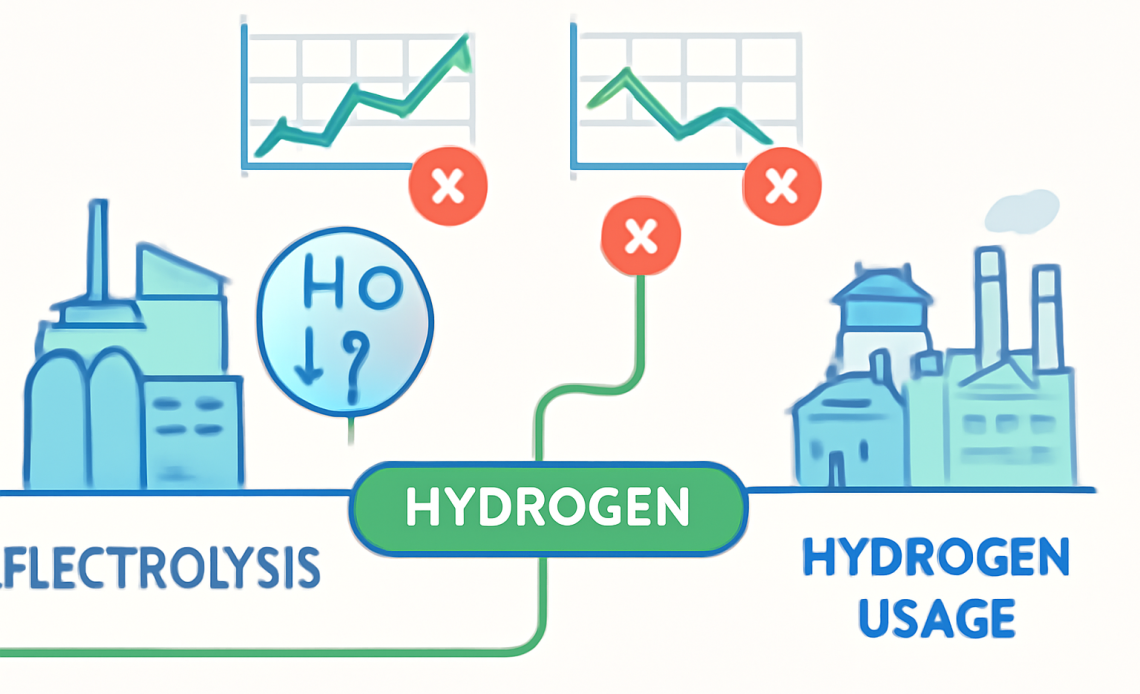India’s ambitious foray into the green hydrogen economy is currently facing significant headwinds, with a recent assessment from a US-based energy think tank highlighting critical impediments to its progress.
The core of the problem lies in the disappointingly slow pace of project commissioning.
This sluggishness is primarily attributed to a dual challenge: first, a pervasive inadequacy in supporting infrastructure, and second, the persistence of ambiguous and uncertain demand signals from potential off-takers.
Infrastructure and demand headwinds
The infrastructure deficit encompasses several crucial areas, including the requisite high-capacity renewable energy supply needed to power electrolysers, the development of specialised pipeline and storage facilities for transporting and holding the volatile hydrogen, and port infrastructure capable of handling export-focused projects.
Without a robust and interconnected supply chain, projects face delays in construction and operation, making financial closure challenging.
Furthermore, the lack of clear, committed, long-term demand is creating a significant investment hurdle.
Industries such as refining, fertiliser, and steel—which are the most likely initial consumers of green hydrogen (or its derivative, green ammonia)—have yet to sign definitive, large-volume purchase agreements.
While investor interest is strong, 94% of the country’s planned green hydrogen capacity is still only at the announcement stage, the Institute for Energy Economics and Financial Analysis (IEEFA) said in a note.
This was attributed to higher costs, which are a major deterrent for potential buyers, according to a Reuters report.
India’s green hydrogen mission
The government of India initiated the ambitious National Green Hydrogen Mission in 2023, allocating a substantial budget of 197 billion rupees, equivalent to approximately $2.2 billion.
The core objective of this mission is to propel India into a global hub for the production and export of Green Hydrogen, a key component in the global transition toward cleaner energy sources.
The primary production target set by the mission is 5 million metric tonnes per annum (MMTPA) of Green Hydrogen by the year 2030.
This initiative is designed to not only meet the country’s domestic industrial requirements for clean fuel but also to significantly reduce reliance on imported fossil fuels, thereby enhancing energy security and reducing carbon emissions.
A senior official from the clean energy department stated this week that India is not expected to meet the target until 2032.
IEEFA said India has 158 projects under development, but only 2.8% are operational and 0.1% under construction as of August.
While announced projects total 11.2 MMTPA—more than double the target—the IEEFA noted that weak demand, along with inadequate storage and transport facilities, is hindering progress.
Future outlook and recommendations
India’s total hydrogen demand is projected by industry estimates to reach 15–20 MMTPA by 2030.
The note indicated that green hydrogen could potentially supply 25% to 33% of this demand, provided policy measures effectively encourage its adoption across sectors such as steel, chemicals, transport, and for export purposes.
To reduce costs and speed up adoption, the report recommends measures such as mandated hydrogen purchase agreements, combining demand, and establishing hydrogen hubs with shared infrastructure.
Charith Konda, energy specialist at IEEFA was quoted by Reuters in a report:
Policy nudges and high-level decarbonisation goals will likely drive demand, but sustained uptake needs global collaboration and concrete domestic steps.
The post Why India is poised to miss Its 2030 green hydrogen target appeared first on Invezz

